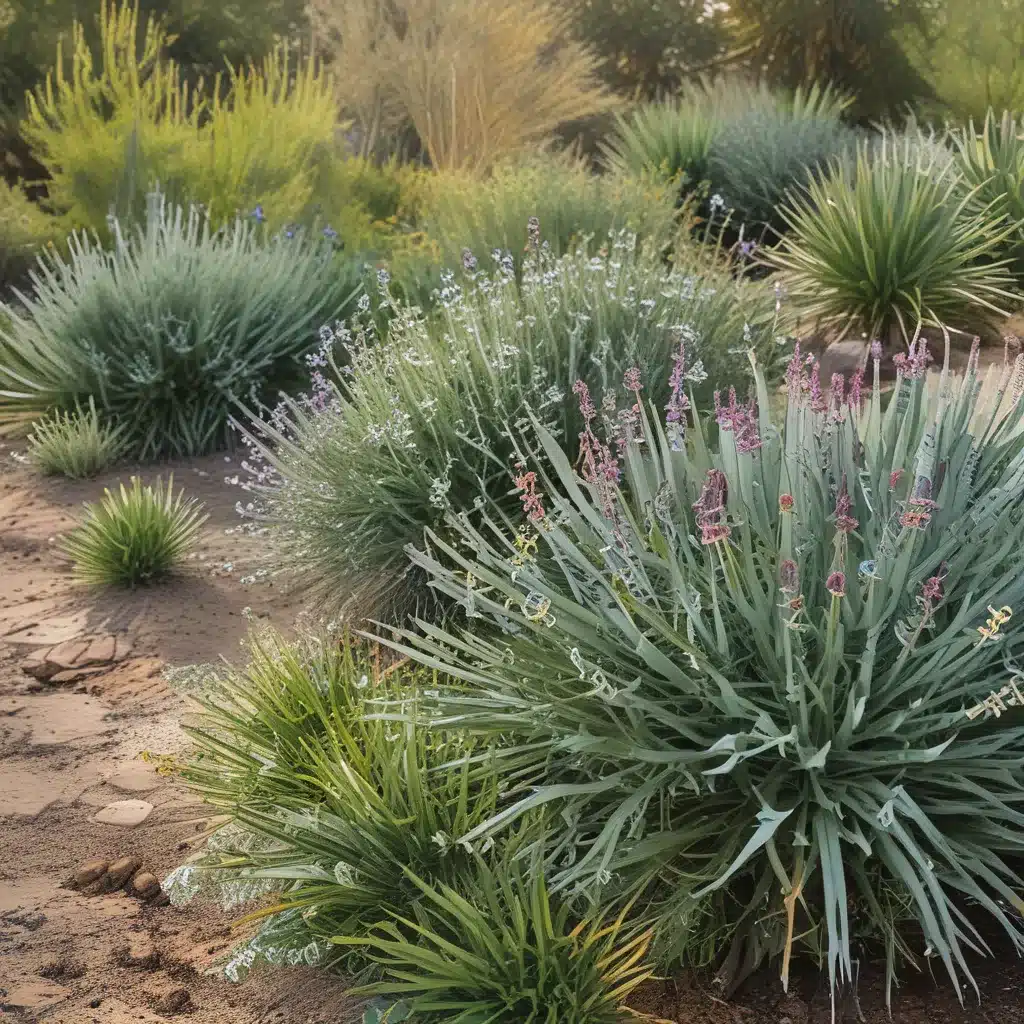Discovering the Joys of Native Landscaping
As a lifelong gardener and nature enthusiast, I’ve always been drawn to the beauty and resilience of native plants. But it wasn’t until I moved to Temecula, California, that I truly appreciated the transformative power of going native in my landscape.
You see, I hail from the lush, verdant Midwest, where rainfall is plentiful, and thirsty plants thrive with minimal effort. But here in sunny Southern California, the rules of the game are quite different. The harsh, dry climate can be a real challenge for traditional landscaping, leaving homeowners like myself scrambling to keep our gardens alive and healthy.
That’s when I discovered the wonders of drought-tolerant native plants. These incredible species, adapted over centuries to the unique conditions of our region, became my secret weapon in the battle against water scarcity. And let me tell you, the results have been nothing short of astounding.
The Myth of Native Plant Invincibility
Now, I’ll admit, I used to be one of those people who thought native plants were basically indestructible. I mean, they’ve been thriving in this climate for millennia, right? How hard could it be to keep them alive?
Well, as it turns out, that’s a common misconception. According to the Dyck Arboretum of the Plains, just because a plant is native doesn’t automatically make it drought-tolerant. In fact, these plants have very specific needs and preferences, and if they’re not properly situated in the landscape, they can struggle just as much as their non-native counterparts.
“Our expectation that these plants will naturally grow on their own and survive under any circumstances is not true,” the Arboretum explains. “The reality is that there are a set of plants that are well-suited for our particular landscape.”
It’s a valuable lesson I’ve had to learn the hard way, by losing a few prized native specimens in my own garden. But with each failed experiment, I gained a deeper understanding of what these plants truly require to thrive.
Finding the Right Native Plants for Your Landscape
The key, I’ve discovered, is to carefully research and select native species that are ideally suited to the unique conditions of your particular landscape. It’s not a one-size-fits-all proposition, and that’s where the real magic happens.
Take, for example, the case of the Missouri Evening Primrose and the Swamp Milkweed. As the Arboretum explains, the primrose thrives in dry conditions, while the milkweed loves having its feet constantly wet. Planting them side by side would be a recipe for disaster, as neither plant would be happy in the other’s preferred environment.
But when you get it right, the results can be truly breathtaking. For me, one of the standout native species in my Temecula garden is the White Spiraea (Spiraea betulifolia var. lucida). As the Real Gardens Grow Natives blog describes, this unassuming little shrub is a true gem, with delicate white flowers, vibrant fall foliage, and an impressive drought tolerance.
“It’s a fantastic little shrub that can be used in the places that a large shrub would outgrow in a few years,” the blog raves. “Its also quite versatile when it comes to both light and moisture conditions.”
And that’s the beauty of native plants – when you pair them with the right environment, they can thrive with minimal effort, providing year-round visual interest and ecological benefits that simply can’t be matched by their thirstier, high-maintenance counterparts.
The Ecological Advantages of Going Native
Of course, the aesthetic appeal of native plants is just the tip of the iceberg. These species also play a vital role in supporting the local ecosystem, providing crucial resources for pollinators, birds, and other wildlife.
As Pacific Nurseries points out, California native plants are perfectly adapted to the region’s unique climate and soil conditions, making them incredibly resilient and self-sustaining. They require far less water, fertilizer, and maintenance than traditional landscaping plants, allowing you to create a truly sustainable, low-impact garden.
But the benefits don’t stop there. Native plants also help to preserve the local ecosystem by providing food and shelter for native species of insects, birds, and other wildlife. In a world where biodiversity is under constant threat, every native plant we add to our landscapes becomes a vital link in the chain, supporting the delicate balance of life in our region.
Bringing it All Together: Designing a Drought-Resistant Native Landscape
So, how can you incorporate the magic of native plants into your own Temecula landscape? The key is to start by exploring the wealth of drought-tolerant species that are native to our region. From the vibrant California Poppy to the stately California Lilac, the options are endless, and each one has the potential to transform your outdoor space.
When designing your native garden, pay close attention to the specific needs and preferences of each plant. Group together species with similar water, sun, and soil requirements, and be mindful of their mature sizes and growth habits. This will ensure that your landscape remains harmonious and low-maintenance for years to come.
And don’t forget to incorporate other native elements, like rock gardens, dry creek beds, and native mulches, to create a truly cohesive and eco-friendly oasis. With a little planning and a lot of love, you can transform your Temecula property into a showcase of native beauty that will inspire your neighbors and delight the local wildlife.
So, what are you waiting for? It’s time to go native and discover the boundless benefits of drought-tolerant landscaping. Head over to A1 Landscape Construction to get started on your dream native garden today!




